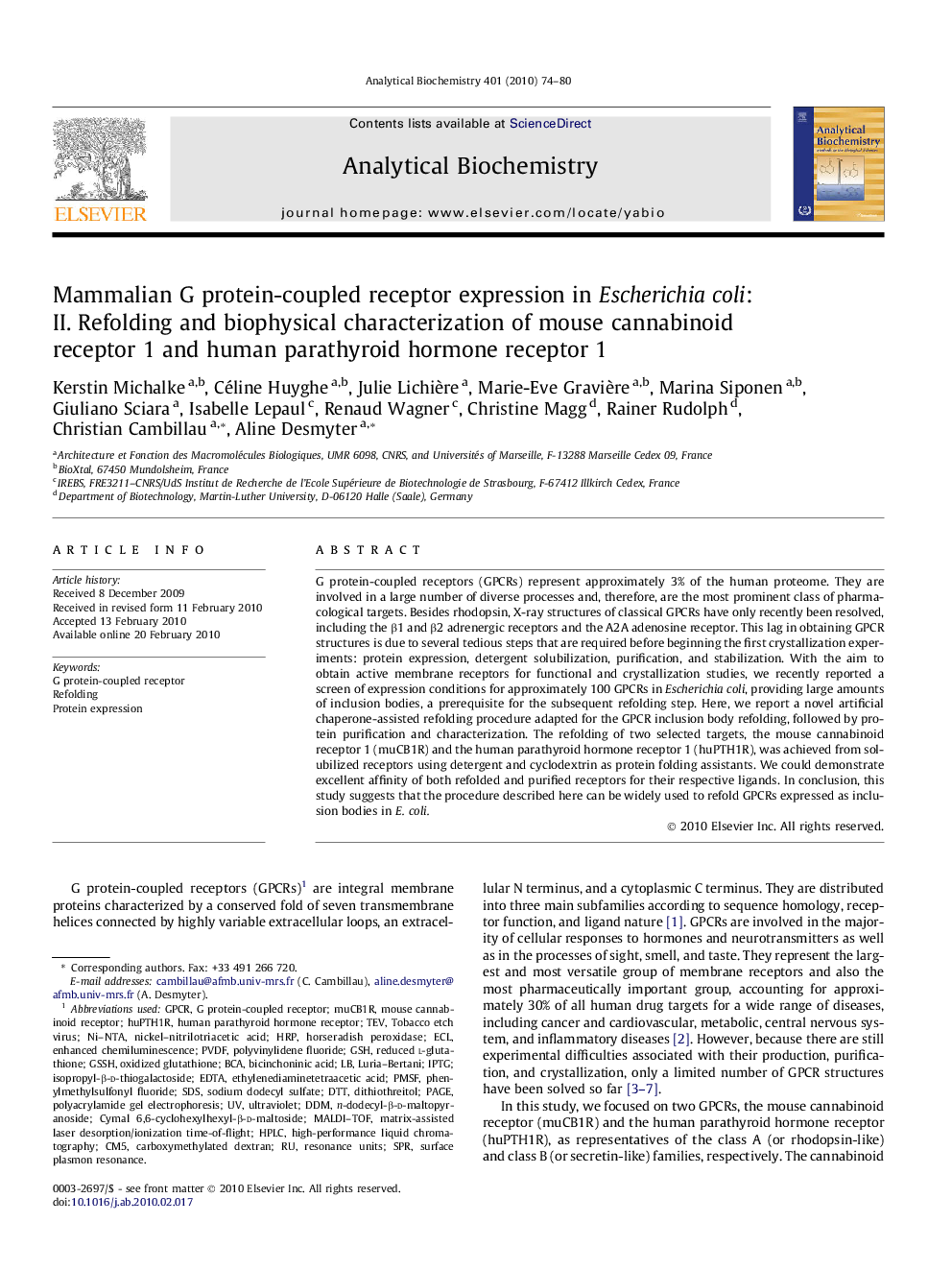| Article ID | Journal | Published Year | Pages | File Type |
|---|---|---|---|---|
| 1174987 | Analytical Biochemistry | 2010 | 7 Pages |
G protein-coupled receptors (GPCRs) represent approximately 3% of the human proteome. They are involved in a large number of diverse processes and, therefore, are the most prominent class of pharmacological targets. Besides rhodopsin, X-ray structures of classical GPCRs have only recently been resolved, including the β1 and β2 adrenergic receptors and the A2A adenosine receptor. This lag in obtaining GPCR structures is due to several tedious steps that are required before beginning the first crystallization experiments: protein expression, detergent solubilization, purification, and stabilization. With the aim to obtain active membrane receptors for functional and crystallization studies, we recently reported a screen of expression conditions for approximately 100 GPCRs in Escherichia coli, providing large amounts of inclusion bodies, a prerequisite for the subsequent refolding step. Here, we report a novel artificial chaperone-assisted refolding procedure adapted for the GPCR inclusion body refolding, followed by protein purification and characterization. The refolding of two selected targets, the mouse cannabinoid receptor 1 (muCB1R) and the human parathyroid hormone receptor 1 (huPTH1R), was achieved from solubilized receptors using detergent and cyclodextrin as protein folding assistants. We could demonstrate excellent affinity of both refolded and purified receptors for their respective ligands. In conclusion, this study suggests that the procedure described here can be widely used to refold GPCRs expressed as inclusion bodies in E. coli.
